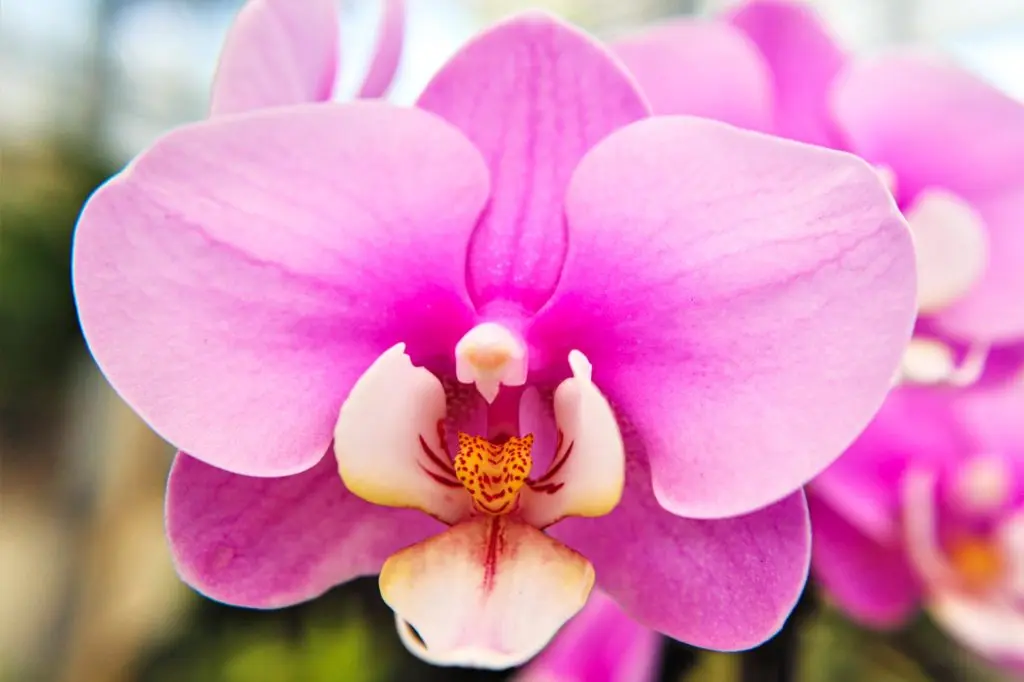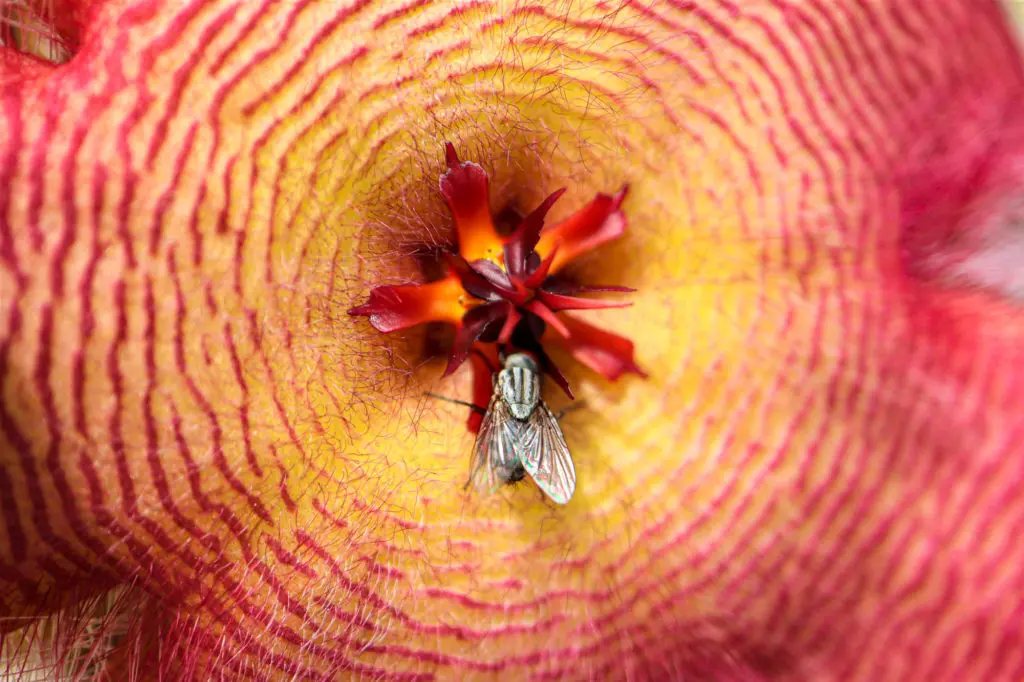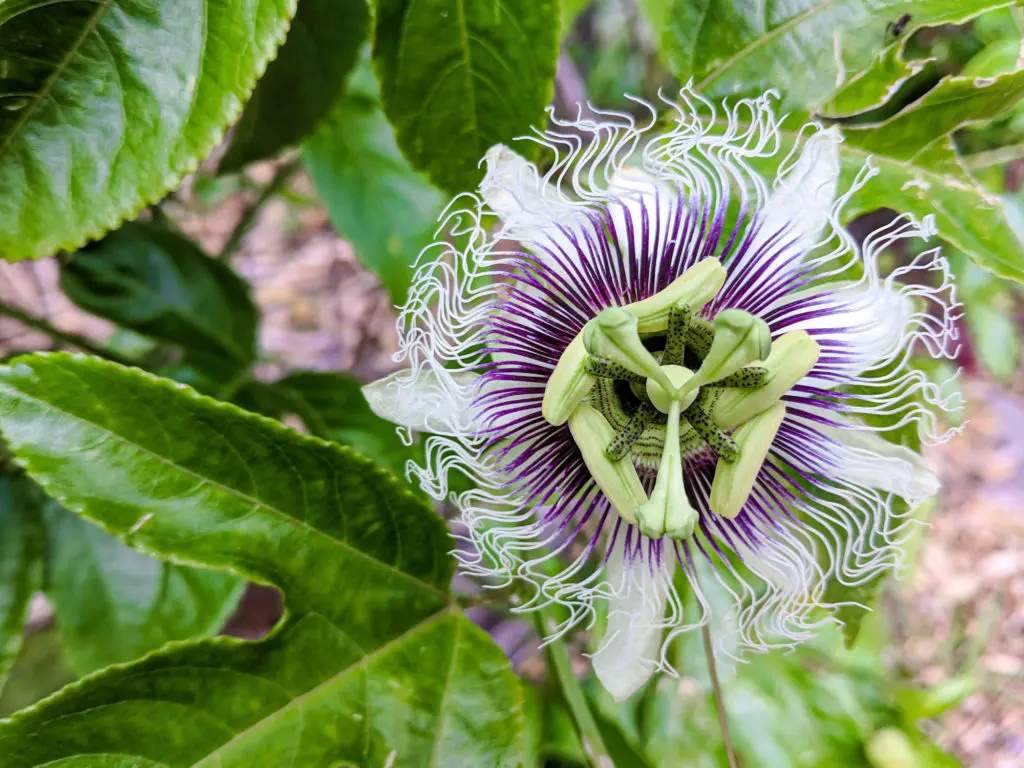by Amanda Rose Newton
The relationship between insects and plants predates our existence, giving plants plenty of time to evolve clever disguises to ensure they bring the insects to the yard.
Not only is this remarkable, but it also provides endless amusement for those in the know. Your backyard in many aspects is like watching episodes of Punk’d: The Insect Edition.
Sneaky Seduction
Call it a little low-brow but exploiting insect males with sexy costumes has been the most successful vocation in the plant world. If you are stuck being sessile, you must find some way to bring those insects to you. The future of your species depends on it!
Orchids have really taken this to the next level, representing the majority of nature’s call girls.
Several species of orchids have evolved to resemble female wasps. The Hammer orchid of Australia kicks this up several notches by giving off a scent that mimics the pheromone of the female.

Intoxicated by the perfume and the vague (maybe if you were a little tipsy at the bee bar) resemblance to a female, the male wasp makes a sad attempt to mate with the flower. In doing so, it knocks pollen directly onto the male’s back. Confused and frustrated, the males usually end up falling for the same trick with at least half a dozen other orchids on the way home, ensuring pollination occurs.
Fast Food
Flies get a bad reputation, and hopefully by the end of pollinator month you will have a new appreciation for nature’s underrated helper.

It probably will not surprise you that flies are into some pretty gross stuff. They eat from trashcans, love anything stinky, and cannot get enough rotting fungi.
The Lady’s Slipper Orchid picked up on this fun fact and purposely tries to look decrepit, sick, and spotty. Those black splotches on the leaves are irresistible to flies, who are duped into paying it a visit hoping to score some fast food on the way home.
The fungal spots reside close to the lip of the purse-shaped opening on the orchid and the fly takes a tumble. It’s too slippery to climb out so he is forced to take the back door, which conveniently means encountering anthers (pollen) and hitting the stigma (female part) on the way out, completing the pollination process in one go.
Flies never learn, and Watson’s pipevine flower of the Southwest is banking on it. It gets the nickname “mouse ears” because of the veiny, fuzzy, ear-shaped leaves.
Sandflies, like mosquitos, require blood meals to lay eggs and from a distance, they believe they are about to score just that when they spot this plant. Upon entry, the “ear” closes, trapping her inside for the night.
Morning triggers the leave to uncurl, allowing the female to escape, with an extra layer of pollen on her backside. It’s not unusual for her to make the very same mistake, sometimes with the very same plant, multiple times before the end of her lifespan, making fertilization an easy win for the pipevine.
Tricks, Not Treats
Plants don’t just go after flying insects, they get the ground dwellers, too. The Resito herb found throughout the Southern countries of Africa has seeds that resemble antelope droppings. Enter the dung beetle.
Can you imagine how excited a female with an underground burrow of grubs to feed would be to come across this motherload? She spends several nights pushing the “dung” back to her nest, not realizing she is basically planting seeds on behalf of the plant.
Here in Florida, we are all too familiar with the glorious, almost alien-like passionflower.

Those native to central America have concocted a clever scheme to ensure those pesky longwing butterfly species take their meal elsewhere.
For any of you who have raised caterpillars before, you might recall that butterflies are strangely territorial about where they drop their eggs. There are multiple reasons for this, namely to ensure there are not too many caterpillars per plant and to not step on another butterfly mom’s turf.
The passion vine has little yellow bumps that appear at maturity and rise slightly above the green leaves. Butterflies see those, think another butterfly has already claimed it, and move on, saving the plant from a bunch of hungry caterpillars.
The relationship between plants and insects is complicated at best and we are just looking at the surface level. In the upcoming weeks, we will go a little deeper into the unique syndromes that exist between pollinators and plants as well as what you can do to keep this enchanting and amusing friendship going strong.


